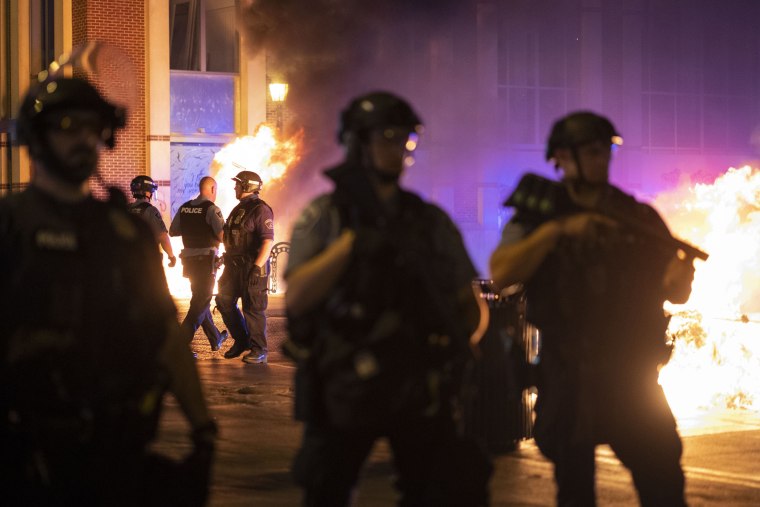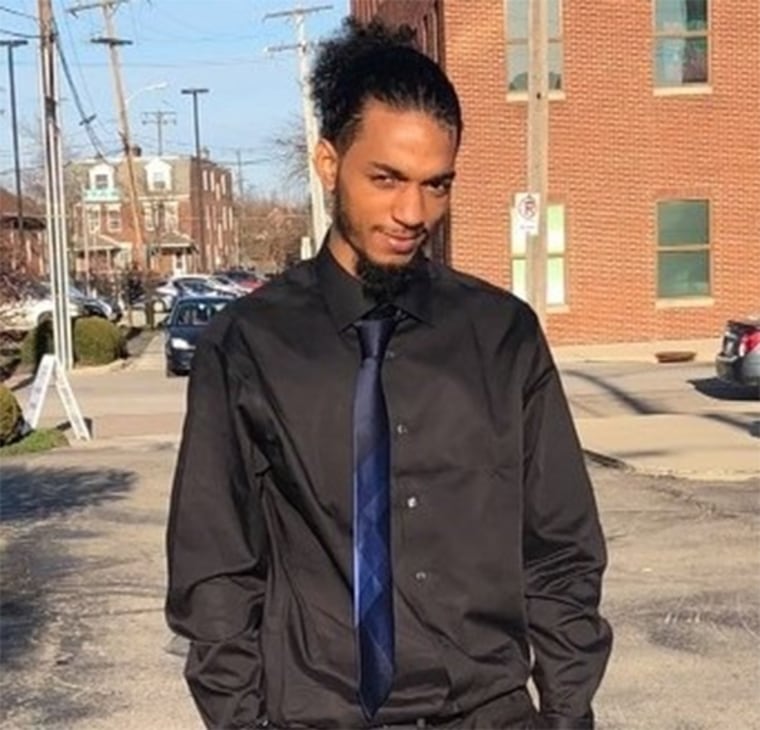Facing a revolt from police chiefs, the Justice Department has agreed for the first time to allow local police assigned to federal fugitive task forces to release body camera video to the public after officer-involved shootings, according to memos obtained by NBC News.
The task forces, led by the U.S. Marshals Service, target people wanted on arrest warrants on suspicion of crimes from drug-dealing to murder. The encounters can be violent, leading to dozens of officer-involved shootings every year. But the federal agents don’t wear body cameras, and local police on the task forces had lacked the authority to release their video after violent encounters.
The move to give police departments control over body camera video is a major shift for an agency that has come under fire by critics calling for greater transparency. It also highlights the willingness of local police officials to stand up to federal authorities in an era of police reform.
“The U.S. Marshals has done the right thing in embracing the fact that this is not something that we want — this is something that we are demanding,” said Orlando, Florida, Police Chief Orlando Rolón, who began to pull his officers off the U.S. Marshals Florida/Caribbean Regional Fugitive Task Force late last year.
The 65 or so Marshals Service task forces in the U.S., which include about 3,500 local officers, have the authority to cross state lines to chase suspects.
The task forces apprehended nearly 78,000 suspects last year, according to the Marshals Service. But they have also come under scrutiny over the high number of encounters that result in shootings and deaths.
An average of 22 people a year were killed in encounters with Marshals Service task forces from 2015 to September 2020, according to The Marshall Project, a nonprofit newsroom that focuses on the criminal justice system.
In the last few years, an increasing number of police departments pulled their officers off the Marshals Service task forces over a policy banning the use of body cameras. In October, the Trump administration took action, allowing local officers on federal task forces to wear cameras when they make “planned” arrests or execute search warrants.
But some police brass said the changes didn’t go far enough, noting that federal authorities still retained ownership of the body camera video. That meant that if one of the local police officers shot a person while teaming up with the marshals, the officer’s police department wouldn’t have the power to share the video with the public.
“You would need prior approval in all circumstances by the federal government to release video,” said Ashan Benedict, the executive assistant chief of the Metropolitan Police Department in Washington, D.C. “It was too restrictive.”
But last month, the Justice Department reversed course.
A Marshals Service memo, dated July 12 and obtained by NBC News, shows that the agency now allows its law enforcement partners to share the camera video if an officer kills or seriously injures a person while working with federal agents.
“The goal is to improve transparency with the public as well as to work to meet the needs of our partner agencies who help make our federal task forces possible,” Justice Department spokeswoman Kristina Mastropasqua said.
The change applies only to the Marshals Service task forces. Local police departments that assign officers to work with other federal agencies under the Justice Department — such as the FBI, the Drug Enforcement Administration and the Bureau of Alcohol, Tobacco, Firearms and Explosives — still won’t have the authority to release body camera video, a Justice Department spokesperson said.
Police officials said their opposition to the policy largely focused on the marshals, because the assignments often involve chasing down suspects in private homes and on public streets.
Christy Lopez, a Georgetown University law professor, said the policy shift shows how a change in presidents can affect policing practices on the ground.
“It really shows the difference in leadership,” said Lopez, a Justice Department official in the Obama administration who led investigations into police departments accused of widespread abuses.
But Lopez said she believes the reform is still too narrow. She said it should allow for the expedited release of video whenever there are questions about a violent encounter, not just when a person is shot or seriously injured.
“The federal government should be leading on issues of accountability and transparency, and far too often they have been trailing behind,” Lopez said.
The Justice Department is also moving toward requiring federal agents to wear body cameras during planned arrests. In a June memo, it gave federal law enforcement agencies under its purview 30 days to come up with plans to implement the directive.
A Justice Department spokesperson said the plans are still in the works.
The new body camera rules have yet to spur a mass return to partnerships with the marshals by the police departments and sheriff’s agencies that dropped out over the dispute.

Several sheriffs in Minnesota pulled their deputies off the North Star Fugitive Task Force in June after officers fatally shot Winston Boogie Smith Jr. in Minneapolis. Smith was wanted on a gun charge. His death sparked protests in a city still reeling from the death of George Floyd.
At least three Minnesota sheriffs said they withdrew from the task force in response to the shooting, frustrated over the continued delay in getting body cameras for their deputies on the federal team.
Tierney Peters, a spokesperson for the sheriff’s office in Anoka County, which is about 20 miles north of Minneapolis, said the agency is still reviewing the Marshals Service’s latest body camera proposal to make sure it doesn’t conflict with state law.
Minnesota rules say the video generally can go public if it features an officer shooting someone or using another form of force that causes serious injury.
“Until control of our own body-worn camera footage resides with the Anoka County Sheriff’s Office, we feel the need to cease participation in the task force,” Peters said.
Orlando City Council members are expected to vote Monday whether to allow the police department to return to the Marshals Service team.

Among the more high-profile incidents involving Marshals Service task forces was the fatal shooting of Casey Goodson Jr. in December.
Goodson, 23, a Black man, was shot five times in the back by a deputy sheriff in Ohio who was finishing up an unsuccessful search for a fugitive as part of a Marshals Service task force, according to a coroner’s report and the Marshals Service.
Goodson was carrying a gun at the time, but in the absence of body camera video, questions remain over what led to the shooting. Local and federal prosecutors are still determining whether the deputy sheriff, who has retired, will face charges.
Sarah Gelsomino, an attorney for the Goodson family, said the new body camera rules are a step in the right direction, but she said she believes it’s too early to tell whether the change will increase accountability or reduce unnecessary deaths at the hands of Marshals Service task forces.
“I think the fact that the federal government is so secretive and really has demonstrated no real interest in having any kind of accountability or transparency for their law enforcement officers is troubling,” Gelsomino said. “What do they have to hide?”
